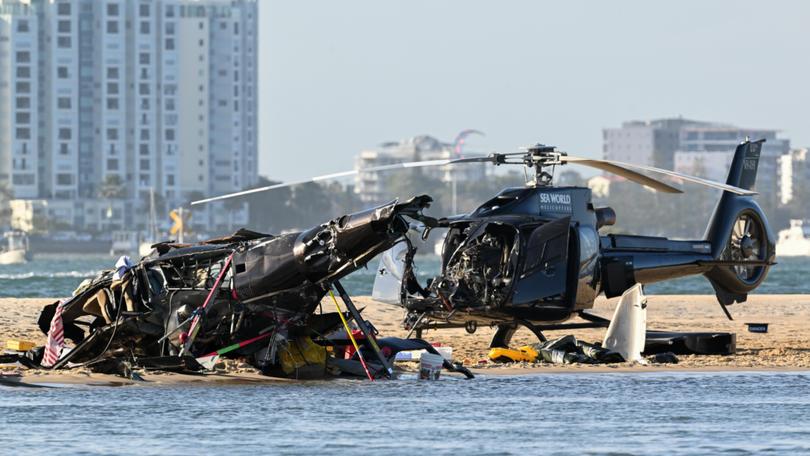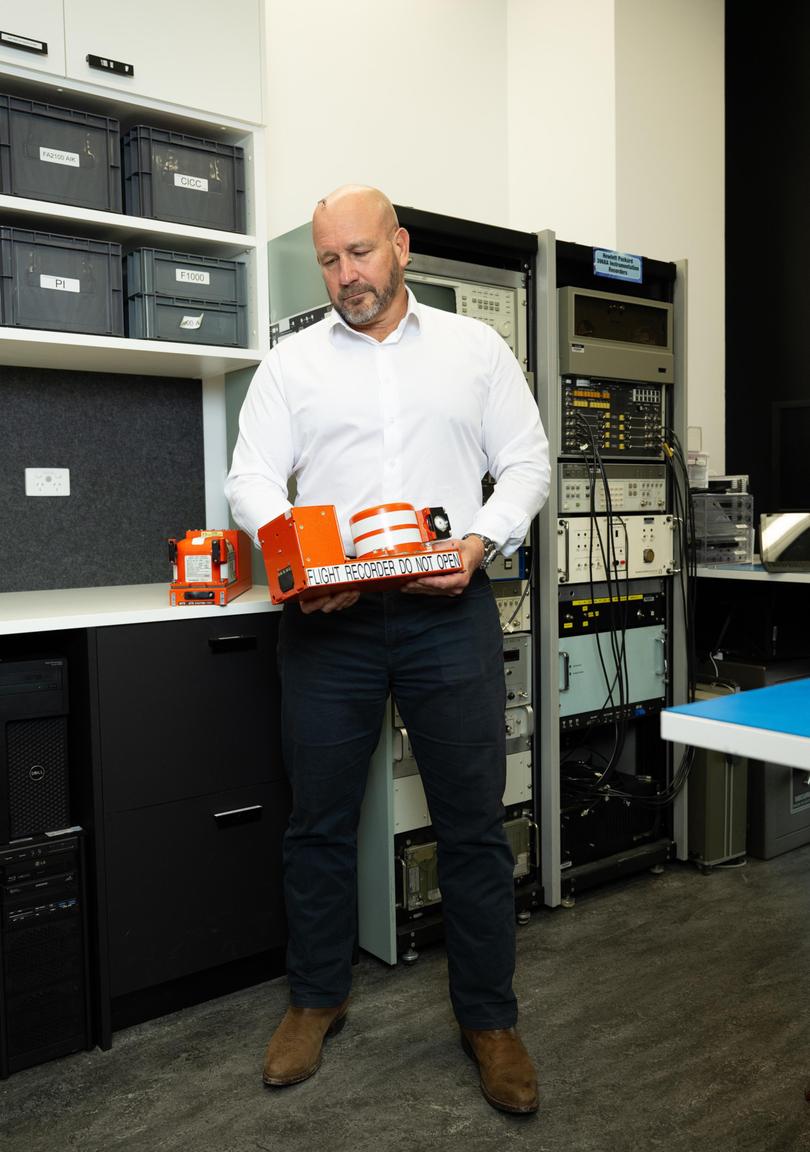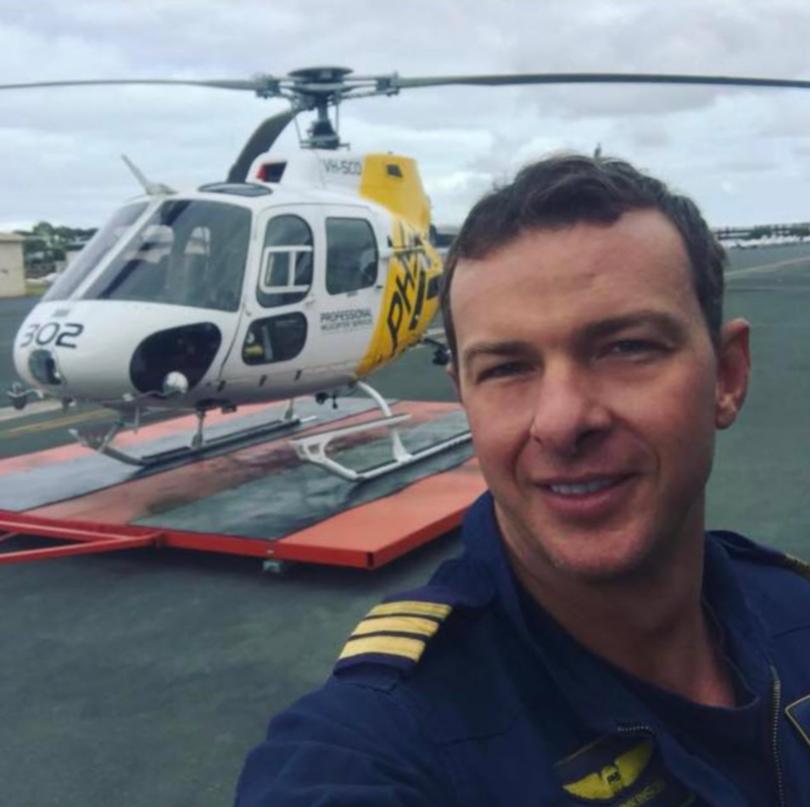Sea World chopper tragedy one of the ‘longest and most complex’ investigations, says ATSB boss Angus Mitchell

The findings of a federal investigation into one of Australia’s worst adventure tourism accidents could be released as soon as next week.
The Australian Transport Safety Bureau is preparing to publish its final report into the fatal mid-air collision of two helicopters conducting joy flights at the Sea World theme park in Queensland.
An experienced pilot and three of his passengers were killed, and four others seriously injured, when two Eurocopters performing five-minute joy flights near Main Beach on the Gold Coast collided in January 2023.
Sign up to The Nightly's newsletters.
Get the first look at the digital newspaper, curated daily stories and breaking headlines delivered to your inbox.
By continuing you agree to our Terms and Privacy Policy.ATSB chief commissioner Angus Mitchell sat down with The Nightly last week to discuss the national transport safety investigator’s current priorities, which he said included finalising the report into the catastrophic accident, due for release in April.
Mr Mitchell said the Sea World Helicopters crash had been one of the agency’s most significant, complex and protracted investigations.
“Because it goes to design with the two air pads, the visibility of the two pilots, some of the limitations that were found in these specific aircraft, the fitment of the life jackets and seatbelts, and surviveability,” he said.
“Some people survived and some didn’t so we need to understand why.
“The final report is on my desk so it’ll come out within the next couple of weeks.”
Sea World Helicopters chief pilot Ash Jenkinson was killed along with three of his passengers – British newlyweds Ron and Diane Hughes and Sydney woman Vanessa Tadros.
Mrs Tadros’ son, Nicholas, survived but the 10-year-old suffered critical injuries and had his leg amputated.
Another two other passengers, Victorian woman Winnie de Silva and her nine-year-old son Leon, were also seriously injured.
The pilot of the second helicopter, Michael James, safely landed his badly-damaged aircraft on a sandbank in the Gold Coast Broadwater after the collision.
The experienced pilot was hailed a hero for saving the lives of his four passengers.

Then in a tragic twist of fate, a few months after the crash, the 53-year-old was diagnosed with cancer and passed away last year.
About 6000 aviation occurrences are reported to the ATSB every year. The small agency, with less than 120 staff, has the capacity to investigate about 70 of those.
Mr Mitchell – who is also the chief executive officer – must decide when to invest, pull back or pivot an investigation.
“With every investigation, I’m devoting finite resources to it … so if I pick up one, it means I’m not picking up another,” he said.
“That’s why we have a very structured triage process. The top of our priority list is large passenger carrying Regular Public Transport, and then it’s smaller RPT, and then it’s charter operations.
“Those occurrences where the public is paying for the flight, and safety regulations are the greatest, are at the top of our list.”
About 80 percent of the ATSB’s investigations involve aviation incidents.
“It’s about putting those finite resources into where they’re going to deliver the greatest benefit, which you don’t always know from day one,” he said.

“If we start investigating and, even after all the work, we just don’t think that there’s a big safety message there, I’ll discontinue it. You have to make a decision and move on.”
The ATSB investigation into the Sea World Helicopters crash has been one of the agency’s lengthiest.
“Some of them do take longer than we’d like but … it would be one of 70 others (we’re working on) and they’re all really important,” Mr Mitchell said.
“With an investigation like Sea World, because of the repercussions, I’d probably put more resources into it because aviation tourism is a big part of the national economy and also because some of the things we found early on have some real implications more broadly.
“As much as timeliness is a really important driver, getting it right is more important for us, so it’s always trying to find that balance.”
While investigators are under pressure to deliver findings in a timely manner, it is the period immediately after a crash that remains the most crucial.
Once deployed to a crash site, they need to interview everyone involved – from witnesses, colleagues and loved ones – as soon as possible.
They will often speak with traumatised crash survivors at their hospital beds.
“We try to do it within the first 24 to 48 hours because that’s when we get the best information … equally, we’ve got to give people the opportunity to totally grasp what’s happened so that’s always a judgment call for investigators,” Mr Mitchell said.
“We’re asking some really challenging questions straight away, because we need to get that information whilst it’s fresh and before it gets tainted.
“We’ll get a mobile phone, for instance, and we’ll see text message exchanges and that can be really confronting but we’re trying to build a picture of a whole range of things, and we’re doing it at the very worst time.”
The ATSB’s sole purpose is to identify transport safety issues and where changes need to be made.
“But with all investigations we have to scope them, because they can become too big, so we’ve got to decide where we are most likely to see something that we can improve,” Mr Mitchell said.
“We have to be careful too, because whilst we have coercive powers and very strong powers in our evidence collection, it’s not a license to go fishing for things … we’ve got to contain it to what has occurred and what’s associated with that.”
Mr Mitchell said investigators are under intense pressure to “get it right” because there is no “house of review” for ATSB reports.
“Once our investigations are out, they’re out, so we have to get it right,” he said.
“We will go back and forth a lot. Once we reach the draft report stage, and we think we’ve got it there, we go through a ‘DIPs’ process.”
There are about 20 “directly involved parties” in the Sea World Helicopters crash investigation. They were all invited to make submissions about the ATSB’s draft report.
“We’ll have hundreds of replies, because there will be a whole range of things (DIPs respond with),” Mr Mitchell said.
“Sometimes it’ll be things (in the report) that the parties just don’t like and that’s fine but if there’s (new) evidence, it’s more around ‘have we missed something? Have we got it wrong?’
“We have to respond to every single submission so that can then take weeks or months.”

In addition to producing the final report into the Sea World Helicopters crash, the ATSB has painstakingly created an animation of the incident to educate industry and public.
“We’ve recreated the visibility that each pilot had on the day based on thousands and thousands of data points from a whole range of sources including mobile phones inside (the helicopters), recorders off the helicopters and building cameras,” Mr Mitchell said.
“We have to get that right.
“We try to make the product as good as we can, because we want people to watch it … not forgetting we’re not here to make entertainment, we’re here to influence safety outcomes.”
Mr Mitchell said the purpose of ATSB reports is to prevent similar tragedies from reoccurring.
“Just about everything we investigate is preventable,” he said.
“We want a positive outcome. It’s not just ‘this is what went wrong’. It’s about what should have been done.
“So we work with the owners of safety issues. We want every safety issue closed out with an action.
“If there’s no action taken, then it goes to a recommendation but we don’t issue a lot of recommendations.”
That is because, usually, by the time a final report is released, identified safety issues have been rectified to mitigate future risk.
“No one wants to have a safety issue raised against their organisation. We get that, but that’s our role,” Mr Mitchell said.
“And if we can have a safety action, then it’s a good new story and the report does what it’s meant to do, which leads to less likelihood of whatever occurred, reoccurring.”
New ATSB data, collated for The Nightly, has revealed that in the 10-year period to December 31, there were 196 fatal aviation accidents reported to the ATSB.
These accidents resulted in 290 fatalities, 28 people with serious injuries and eight people with minor injuries.
At least five of the fatal crashes could be classed as adventure tourism operations.
Since then, a pilot and two of his passengers were killed in a floatplane accident at Rottnest Island, off Western Australia, in January.
The ATSB’s final report into that crash is due by the end of this year.

